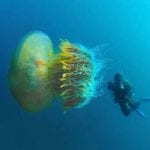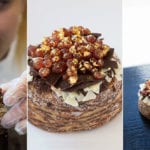 Weird Stuff
Weird Stuff  Weird Stuff
Weird Stuff  Mysteries
Mysteries 10 Tragic Disappearances and Deaths in Joshua Tree National Park
 History
History 10 Ways Childhood Really Sucked in the Old West
 Music
Music 10 Name Origins of Famous Bands from the 1990s
 Religion
Religion 10 Biggest Turnarounds by the Catholic Church
 Weird Stuff
Weird Stuff 10 Unbelievable Times Laws Had Unintended Consequences
 Humans
Humans Ten Historic Women Who Deserve Way More Credit Than They Got
 Movies and TV
Movies and TV 10 Films That Spawned Major Lawsuits
 History
History Ten Times Towns Were Wiped Off the Face of the Earth
 Creepy
Creepy 10 of the Most Disturbingly Haunted Public Houses in the UK
 Weird Stuff
Weird Stuff 10 Niche Subcultures That Are More Popular Than You Might Think
 Mysteries
Mysteries 10 Tragic Disappearances and Deaths in Joshua Tree National Park
 History
History 10 Ways Childhood Really Sucked in the Old West
Who's Behind Listverse?

Jamie Frater
Head Editor
Jamie founded Listverse due to an insatiable desire to share fascinating, obscure, and bizarre facts. He has been a guest speaker on numerous national radio and television stations and is a five time published author.
More About Us Music
Music 10 Name Origins of Famous Bands from the 1990s
 Religion
Religion 10 Biggest Turnarounds by the Catholic Church
 Weird Stuff
Weird Stuff 10 Unbelievable Times Laws Had Unintended Consequences
 Humans
Humans Ten Historic Women Who Deserve Way More Credit Than They Got
 Movies and TV
Movies and TV 10 Films That Spawned Major Lawsuits
 History
History Ten Times Towns Were Wiped Off the Face of the Earth
 Creepy
Creepy 10 of the Most Disturbingly Haunted Public Houses in the UK
Top 10 Once-Popular Treats You Can No Longer Eat
There are plenty of once-popular dishes from around the world that fell out of favor, but then there are those that you can’t eat — ever. This can happen for various reasons, including a business going belly up or a lawsuit resulting in a discontinued product.
Whatever the reason, there’s a chance you might have enjoyed these delicious treats once in your life but can’t find them any longer. They’ve gone the way of the Dodo, and while some may return, it’s unlikely you’ll ever get to eat these ten once-popular foods ever again!
10 Unfortunate Deaths Caused By Food
10 Jell-O Pudding Pops
Back in the 1980s, you couldn’t watch a show on television without seeing an ad for Jell-O Pudding Pops. They were ubiquitous, and thanks to the popularity of its spokesperson, Bill Cosby, they appealed to kids and parents alike.
Putting aside what we now know about Cosby, the treats he sold to the masses were delicious and popular. Still, they disappeared in the 1990s due to lagging sales. This is simply a case of a snack losing money, so the company stopped producing them… at least, for a while.
In 2004, General Foods, the company that owns Jell-O, licensed Pudding Pops’ name to Popsicle, which isn’t simply the name of a frozen treat; it’s also a company. Popsicle began producing them after acquiring the license, but they were made using a different recipe and popsicle molds.
Popsicle’s decision to use its own molds and different recipe made the new Pudding Pops look like a cheap imitation. They never sold well, and the company discontinued them. You can still buy the original Pudding Pop mold and follow a recipe if you wanted to make your own, so this is a treat that can live again.
9 McDonald’s Happy Meal Cookies
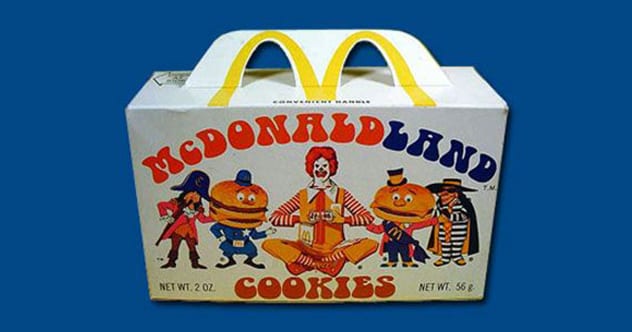
These days, if you want to get cookies at a McDonald’s, they have chewy and delicious chocolate chip cookies available, but it wasn’t always like that. For decades, the only cookies you could get at McDonald’s came in a Happy Meal, and they were very different.
Kids loved to eat them, and they came in either animal crackers in the shape of McDonald’s characters or chocolate chip. Most kids would probably prefer them to what they offer now (apple slices). The cookies were first introduced back in 1974, with the animal cracker version arriving first.
The chocolate chip cookies came in a box, and they were small, hard, and overly processed. Still, people remember them fondly, and McDonald’s receives requests all the time, asking for the recipe or for the company to reintroduce them.
People occasionally sell packs of them online, but they haven’t been produced in over 20 years, so buy and eat at your own risk! While the popular fast-food chain still makes a ton of treats, they have moved away from the overly processed fare that helped build their popularity in the previous century.
8 Sunny D
You can still buy a drink called Sunny D these days, but it’s completely different now than it was decades earlier. It launched in 1963 as Sunny Delight, but most kids who grew up in the ’90s know it simply as Sunny D, thanks to the plethora of commercials throughout the decade.
The drink came with a ton of controversies due to how it was marketed. It was sold as an alternative to orange juice despite being an orange-colored soft drink without any juice in it at all. As parents began paying attention to ingredients, sales plummeted, and the negative press didn’t help.
A four-year-old girl’s skin turned yellow after drinking 1.5 liters of the stuff every day. That’s not an urban legend — it really did happen, thanks to the beta-carotene in the drink. Poor publicity and concerns in the UK and elsewhere drastically impacted sales.
Sunny Delight Beverages ultimately had to reformulate the drink, bringing its fruit content from 0% to 70%, but the costs were too high. These days, Sunny D contains less than 2% fruit juice and comes in various flavors, but it’s nothing like the original.
7 Candy Cigarettes
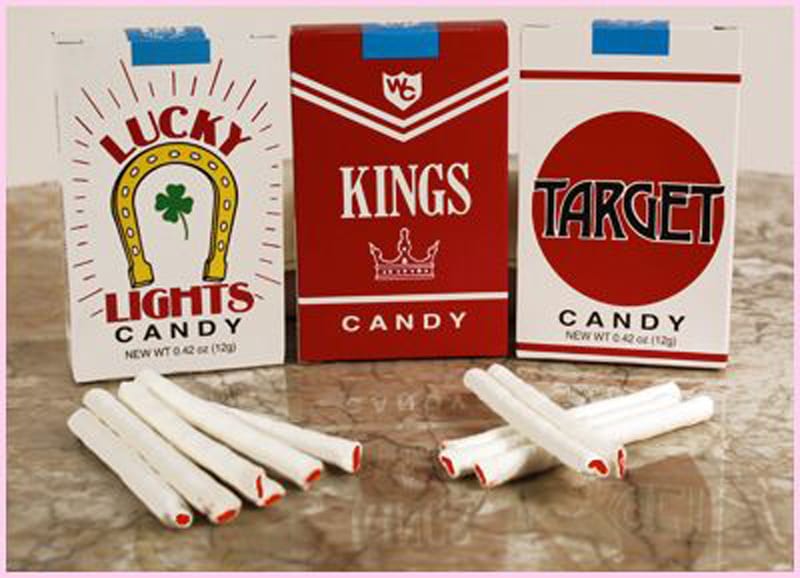
Candy cigarettes were first introduced in the late 19th century. They were made of either chocolate, bubblegum, or chalky sugar, and kids loved them. They were marketed as edible cigarettes and often came packaged in a box that looked exactly like a pack of cigarettes.
The problem with candy cigarettes isn’t their ingredients or anything like that; it’s how they were marketed and sold. For most of the 20th century, parents complained about them, believing they desensitized children to smoking.
This led to the assumption that consumption of candy cigarettes led to people smoking later in life. As it happens, several studies have suggested this to be true, and as a result, candy cigarettes are a lot harder to find these days than they were in the past.
One of the earliest victims of cancel culture, candy cigarettes are banned in several countries, including the UK, Spain, Brazil, and many more. They are still made, but they must be marketed as bubble gum or candy sticks, removing the word “cigarette” from all packaging (which still looks like a pack of smokes). This makes them available in some places, much to the chagrin of culturephobes.
6 Life Savers Holes
Life Savers candy has been around since 1912, and for most of the candy’s history, it came in the shape of a ring-style life preserver, hence the name. In 1990, a new product was introduced, and through a rather brilliant marketing strategy, Life Savers Holes were born.
Like donut holes, Life Savers Holes were marketed as that missing bit from the candy’s middle. They were essentially smaller pieces of the same candy the company had always sold. It was a way of selling more of the same to the consumer, and it worked… at first.
The candies came in a plastic tube with a flip-top plastic cap that could easily break apart. This created a potential choking hazard to anyone who unwittingly threw the cap into their mouths along with some candy, and RJR Nabisco issued a voluntary recall after removing them from the shelves.
They did return with updated packaging a few months later, but they didn’t remain for long. Ultimately, they proved to be little more than a novelty, and the public grew tired of them. They were discontinued soon after their reintroduction.
5 Lay’s WOW Chips
When Frito-Lay introduced a new brand of fat-free potato chips in 1998, health-conscious fans went wild. WOW included versions of Lay’s Ruffles, Doritos, and Tostitos brand chips. They were marketed at the people’s growing desire for healthier snacks. Unfortunately, making a potato chip fat-free isn’t easy, and it requires some serious chemistry.
To make it happen, Frito-Lay opted to use a fat substitute called Olestra, and that came with some unforeseen consequences. The choice to use Olestra proved disastrous to the company’s sales. WOW chips dropped in sales by more than 50% by 2000 due to complaints of abdominal cramping, diarrhea, and fecal incontinence, which is the fancy way of saying “anal leakage.”
This required the chips’ packaging to contain warning labels, reading, “This Product Contains Olestra. Olestra may cause abdominal cramping and loose stools. Olestra inhibits the absorption of some vitamins and other nutrients. Vitamins A, D, E, and K have been added.”
Eventually, the WOW brand was dropped due to negative publicity and lagging sales. It was rebranded as “Light” with the same old side-effects, so they are ‘technically’ still around in deceptively different packaging.
4 Gatorade Gatorgum
The Fleer Corporation produced a Gatorade brand of chewing gum, beginning in the late 1970s. Gatorgum came in lemon-lime and orange (the original flavors of Gatorade). Each pack came with the tagline, “IT WORKS!” This referenced the claim that it “helps quench thirst,” just like the drink it was based on.
While it was on sale, Gatorgum wasn’t the most popular chewing gum brand on store shelves. Still, it sold well enough to keep it around, and people who especially liked the drink were the ones who tended to buy it. The flavor was reasonably strong, though it didn’t last for very long.
It did work well to help create saliva, so the marketing claim that it was a cure for “dry mouth” proved true enough. When Fleer lost the license to produce it, the contract went to Swell and Vicks. The gum remained on the shelves from the late 1970s until 1989, when it disappeared.
This was due to the contract’s expiration, and it has never been renewed. The company simply stopped producing Gatorgum, so it disappeared, and fans were left to scour eBay, looking for ancient packs of their favorite chewing gum.
3 Nestlé Magic Ball
The Nestlé Magic Ball was first introduced in the 1990s to emulate the popular Kinder Surprise candies in Europe. The Magic Ball consisted of a large outer shell of milk chocolate with a surprise contained within. When the ball was opened, a small Disney figurine was found inside, hence the “wonder” of the Magic Ball.
The Nestlé Magic Ball was a major success for the company, but it ran into some problems. Competitors in the candy market and consumer groups banded together, labeling the Nestlé Magic Ball as a choking hazard, thanks to the small toy found inside.
Nestlé insisted that the Magic Ball was safe but admitted it had received a dozen reports of safety problems. As a result, the Nestlé Magic Ball was removed from production in 1997, never to be seen in its original form again. Nestlé reintroduced the product as the Nestlé Wonder Ball In 2000.
The Wonder Ball consisted of the same candy shell, but instead of a toy, it contained more candy inside. The candies came in various themes, including Disney, Pokémon, Cartoon Network, Care Bears, and many more. It disappeared for nine years and was re-released by Frankford in 2016 with candy and stickers inside.
2 Four Loko
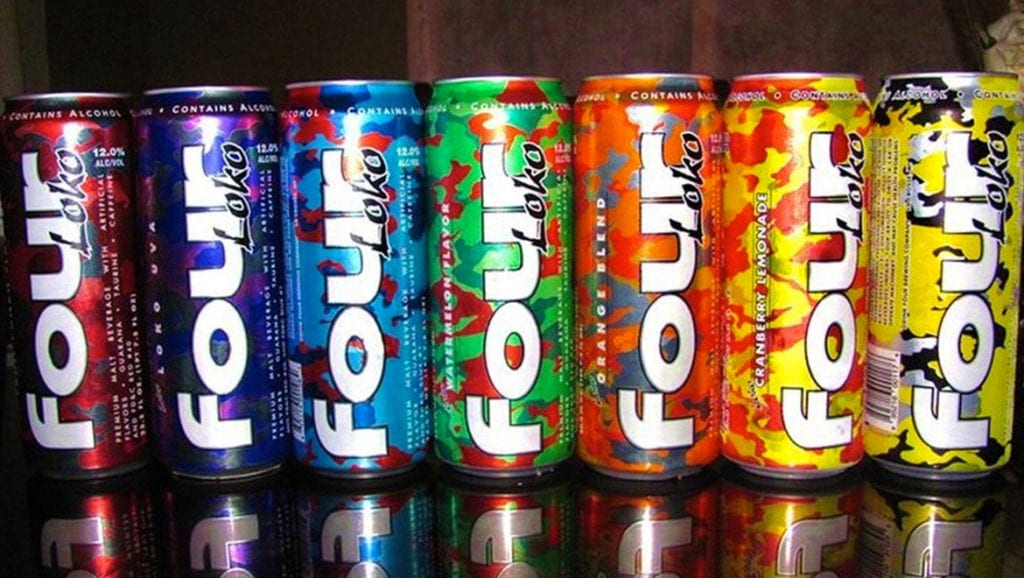
Four Loko was first developed in 2005 as “energy beer,” which was primarily marketed to young college students who needed to build up some energy while drinking alcohol. Soon after it was introduced, it became popular among teenagers, which became a problem for Phusion Projects, the company that sold the drink.
The problem wasn’t necessarily with the alcohol; it was the caffeine, which formed the basis of the company’s marketing strategy for Four Loko. The original recipe included around 155 mg of caffeine, which is about the same amount in a strong cup of coffee. Combining a stimulant like caffeine and a depressant like alcohol can be dangerous.
In some cases, it can lead to severe intoxication and blackouts, so it wasn’t long before the FDA, and several state attorneys general got involved. Phusion eventually agreed to drastically change its marketing to remove models under 25 years of age and anything that glorified alcohol and binge drinking.
The company also reformulated the drink, removing caffeine, guarana, and taurine, replacing it with Red 40 (a food dye). When this happened, a black market rose to sell the original drink, which averaged five times the original price.
1 Haribo Sugar-Free Gummy Bears
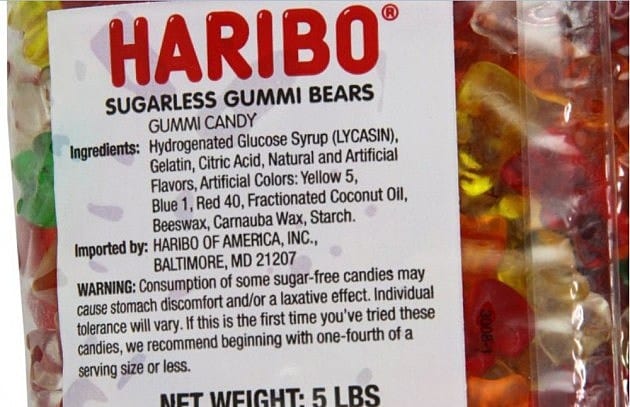
Gummy bears are made with glucose syrup and sugar as their first two ingredients, so they aren’t the healthiest snacks a person can eat. To counter this problem and sell to more health-conscious people, Haribo created a sugar-free alternative.
The alternative they settled on was Lycasin, and its main ingredient is maltitol, which is a type of sugar alcohol. On paper, everything seemed great, thanks to the incredible similarities between natural sugar and Lycasin.
Unfortunately, the human body may recognize Lycasin as sweet, but it doesn’t like to keep the stuff around for very long. It goes through your system like Drano through a pipe. There are countless Amazon reviews for the product, which explain — in great detail — how Haribo’s Sugar-free Gummy Bears tore through people’s systems.
The bulk of them include phrases like “intestinal power wash,” a “volcano,” a “flood of toxic waste,” and other colorful explanations. Haribo discontinued the product, but you can occasionally find them on sites like eBay. Still, use caution and eat them close to your bathroom!

